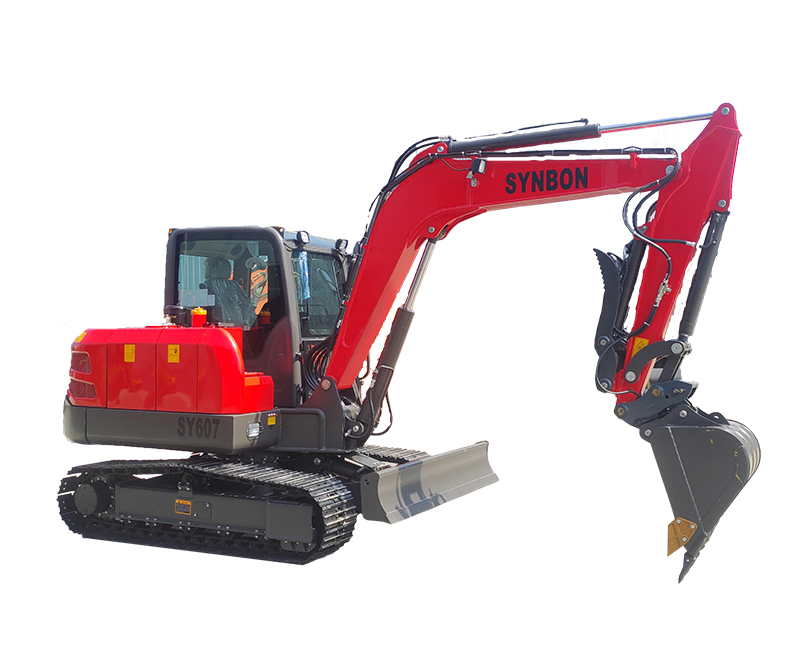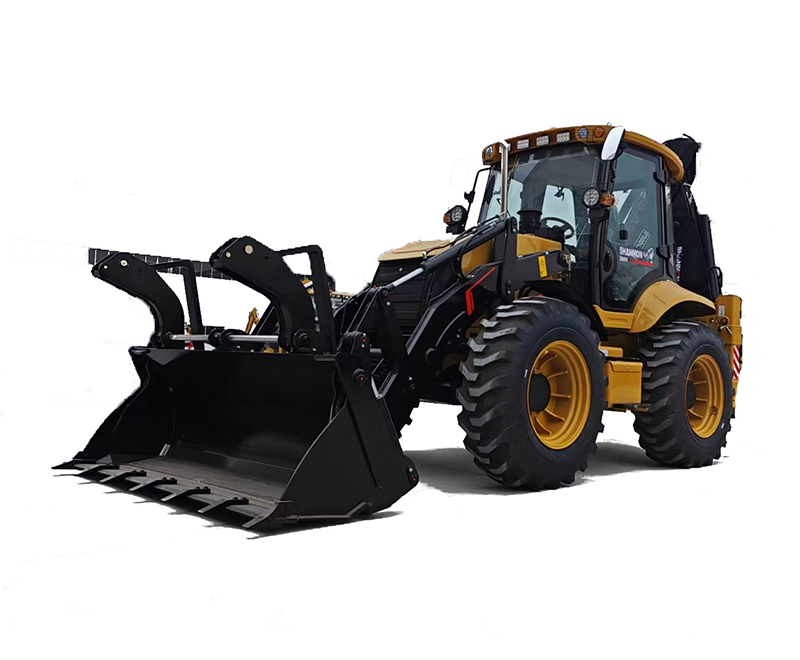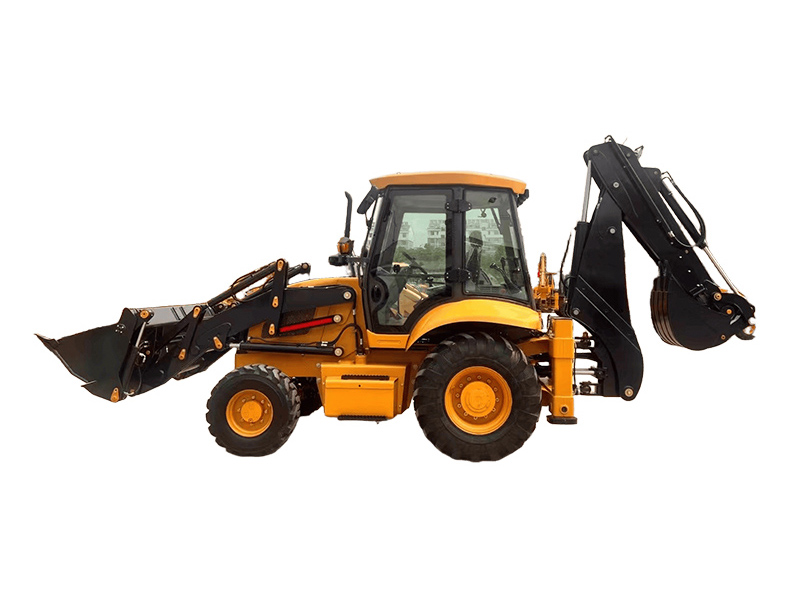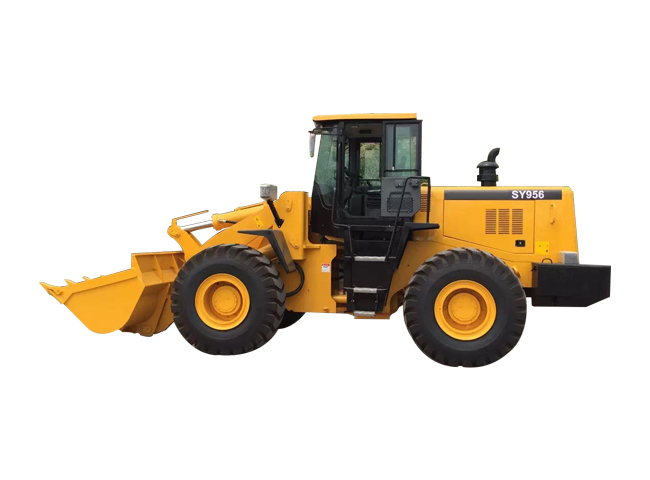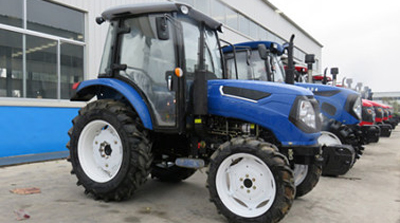Capacity building is like "death crawling", and you need to never give up, carry on the burden, and not fail. Capacity building is not a simple matter that is done overnight. It needs to be gradual, self-pressurized and unremitting.
The staged deep adjustment of the agricultural machinery market, the leading product sales continued to decline, so that dealers in the front line of competition took the lead in witnessing the "cannon sound" from the market. A number of dealers grew up in the "cannon sound" and some dealers were The situation that disappeared in the competition. In the face of future market competition, agricultural machinery dealers must have ten development capabilities in order to achieve their own development.
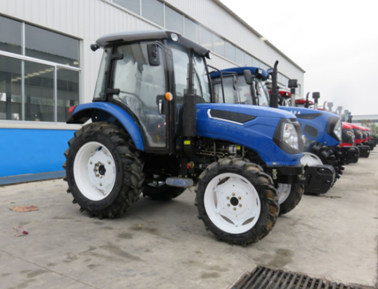
1.Cash management and control ability in distribution operations
In the current fierce market competition, dealers should attach great importance to cash flow management. There is a risk in cash flow, and it does not rule out multiple pressures and consequences such as losses, transformation, and exit. For the dealers, they have sufficient cash flow to achieve the peak season, seize the opportunity, seek the trend in the off-season, avoid risks, and effectively improve the competitiveness of distribution operations. Avoiding cash flow risks has become an important factor in responding to market risks.
First, the supply side controls the purchase. The annual, quarterly, and monthly targets are set based on market share and market coverage, and adjusted according to market trends. According to the market capacity and the real needs of customers, order-based operations are implemented. Avoiding over-stocking and blindly purchasing goods to form an inventory backlog, resulting in a high level of cash flow.
Second, the operating terminal dynamically revitalizes and reduces inventory. Optimize sales models, maintain inventory and sales consistency, and meet sales while minimizing inventory. Actively check inventory, increase sales promotion of high-inventory models, speed up capital withdrawal, reduce capital occupation, and maintain inventory rationality.
Third, the sales terminal controls the accounts receivable. Agricultural machinery distribution itself is a low-profit industry. In reality, the sales behavior often overdue repayments, diluting operating profits, increasing the risk of capital recovery, and even bringing dealers into a "triangular debt" cycle. Dealers should comprehensively strengthen cash flow budget management and effectively control credit sales. Establish and improve the customer credit management system, effectively reduce the risk of credit sales, and further optimize the management of accounts receivable.
2.The value strategy ability in the fierce competition
The fierce competition in the agricultural machinery market, the most notable feature is: lack of price warfare and less vitality, no value warfare difficult to develop. Agricultural machinery enterprises basically form two camps, some companies insist on providing users with lasting product value; others are fully engaged in price war-driven competition. As a dealer, to achieve sustainable development, it is necessary to carry out market competition dominated by value wars.
The first is to enhance the brand image. Excessive price wars have deeply hurt the image of agricultural machinery enterprises and circulation enterprises, and it is easy to cause "low-end, low-price" brand in the user community. Dealers need to establish the brand image, product value, service output-oriented multi-strategy to enhance brand connotation, and continuously enhance the added value and core competitiveness of products.
The second is to cultivate product value. With the emergence of high-end, high-quality products, the value war is more in line with the inherent needs of the healthy development of the market. Dealers must know how to choose, adhere to the cooperation with leading OEM companies, sell quality products, fully adapt to regional agricultural machinery agronomy integration, operational needs, and play the value of product management. Strengthen service coordination and provide users with a package of training, use, maintenance and maintenance needs. Adhere to the value competition, avoid price wars, jump out of low-cost competition, and the odds of losing sales.
The third is to provide value output. Starting from the value chain and business chain, the system looks for weak links and unfavorable factors, and comprehensively optimizes invalid or inefficient functions, redundant staff and products. Establish a system of discovering demand, satisfying demand, creating demand, and dynamically realizing demand. Focusing on the whole cycle of crop growth and based on the whole process of agricultural equipment, we strive to provide users with a leading value transfer in terms of product demand and operation applications.
3.Long-term development of cash sales ability
Credit sales are a sales behavior in which dealers face fierce market competition. Due to various factors such as reduced operating income and reduced planting income, it is indispensable to sell credit to honest customers in the short term. Once credit sales become a habit of selling, regardless of the customer category, it will restrict the normal sales order based on cash sales. Reduce the phenomenon of credit sales, form a model of selling in cash, and gradually return to normal sales. The following work is required.
The first is to increase leverage. First-line host companies have adopted the mode of cash sales, and some regional dealers have gradually become mainstream. Dealers must use preferential levers to increase cash incentives and cash payments, encourage and guide users to purchase cash, and form a cash sales model.
The second is to establish a credit evaluation system. Strengthen cooperation among financial institutions and establish a user credit evaluation system. On the basis of the formation of cash sales, the stage is rich in sales models. It is preferred to finance sales such as financial leasing, mortgage sales, and installment payments to expand the scale of credit sales. Strictly close the credit, fail to meet the credit assessment requirements, resolutely put an end to credit sales, credit sales, and ensure the safety of funds.
The third is to strengthen service tracking. Increase the promotion and application of products, establish user reputation, and comprehensively enhance the reputation of products. Do a targeted tracking service to avoid defaults caused by product problems. Pay attention to the use of laws and regulations to effectively protect legitimate and legitimate rights and interests.
4.Overdraft management ability in stage competition
Market overdraft is a kind of competitive behavior where opportunities and risks coexist. Dealers sometimes encounter market launches and regional subsidy policies have not yet been introduced. Since the single subsidy model will be adjusted accordingly, in this case, it will lose more market opportunities if it is not sold; the implementation of sales will face the risk of reducing the subsidy for a single model. This requires dealers to have the dual ability of market overdraft and risk management.
The first is to grasp the demand. The farmland operation is seasonal and the user purchase time is short. The dealers should carry out orderly control according to the demand, increase the support of the partner and honest users, and implement product sales. Increase policy tracking, keep abreast of demand trends, and avoid sales imbalances.
The second is to adjust the rhythm. In practice, because users generally find it difficult to identify the full purchase, dealers usually sell in advance by means of differential sales. In the face of special circumstances, dealers should strengthen communication with users, sign full-distribution contracts, and adopt multi-return and purchase discounts to encourage full purchases. Avoid the subsequent operational difficulties left by market overdraft.
The third is to control the risk. In the face of fierce market competition, it is the last word to survive. Dealers should strengthen their risk awareness, evade from the source, and avoid excessive market incentives. Further reduce market overdraft, control operational risks, implement normal sales, and seek opportunities for further development.
LOCATION : Industry News
NEWS
Before: Problems that are easily overlooked in tractor maintenance
Next: African customer visited SYNBON during the National Day holiday to negotiate a 5 ton SY956 loader order.
5.Accurate promotion ability in product sales
Markets such as the battlefield, dealers have promoted as a means of increasing sales. From the reality, the promotion is about "the heart is changing people's mind", and there is no "small cleverness". Practice has proved that the cost of developing a new user in the agricultural machinery industry is eight times that of maintaining an old customer, and 70% of new users are introduced by old customers. A perfect promotion can really increase sales in a short period of time, especially under the tradition of “word of mouth”, a “myopia” promotion that hurts users will bring long-term loss of goodwill to dealers. Some dealers unilaterally emphasize the role of promotion, selling ordinary products at a better price, so that users feel that the goods are worth the money, the direct consequence is that they no longer buy the products of this dealer. It is more important to implement targeted and precise promotions.
The first is to raise awareness of market perception. Effective insight into regional policy support priorities, planting patterns and user needs. Strengthen market perception and judge market competition, operational characteristics, and user needs. Track and strengthen competitor research to know ourselves and ourselves.
The second is to implement precise layout. Analyze your own strengths and weaknesses, implement multi-dimensional combinations of pre-publication, product mix, and after-sales tracking, so that users can buy value. Avoid any form of shoddy, low quality and high price behavior. Strengthen marketing resources, market response, operational status synergy, combined with promotional features and habits to ensure a fine layout of promotions.
The third is to improve sales performance. Understand the purpose and level of the target promotion, implement targeted promotion response, and achieve targeted. Focus on the successful planning and sales of customer groups such as agricultural machinery cooperatives, family farms, and large agricultural machinery, and achieve the goal of expanding sales and increasing sales.
6.Sustainable development capability in brand building
Brand is a kind of specific cognition, which represents responsibility and trust. Once a brand advantage is formed, it will form a stable cooperative relationship among the user groups. Lack of brand accumulation, no brand accumulation, can only become a seller, it is difficult to survive in the market competition. Selling only products without brand, the future will be empty. The brand strategy of most dealers is missing, establishing a dealer brand, allowing users to form brand loyalty, has become a top priority.
The first is to develop brand strategy. Integrate brand strategy into the development of dealers, accelerate the brand building of dealers, establish a brand vision, and create a brand that allows users to catch up.
The second is to be good at grasping the spread of the highlands. Constantly increase the brand's communication and value transmission, and quickly enhance its brand image. Extend the competitive advantage in the marketing value chain, strive to build brand awareness of user recognition, recognition and recognition, and continuously expand brand influence.
The third is to consolidate the brand content. Committed to the introduction of advanced technology, continuous innovation, diversified marketing methods, nanny-style services, building brand highlights. Integrate the tangible resources, intangible resources and development capabilities of distributors' production, sales, people and property, continuously consolidate the brand status of the company, realize brand value-added, and extend from selling products to plastic brands.
7.Product synergy in product launch
Faced with the homogenization of the market, more and more companies are constantly increasing the speed at which new products are launched. Sometimes the speed of product launch is too fast, not only does not form a new competitive advantage, but it has a greater impact on traditional products.
This will put some pressure on the dealer. It often takes a lot of effort to open the market with existing products, and there is still a certain amount of inventory, and new products are ushered in the time to market. Agricultural machinery enterprises have successfully opened the market by relying on old products, and have achieved good results in user word-of-mouth and achieved their own development goals. Actively increase the development of new products. In order to seize market opportunities when new products are launched, some enterprises have begun to implement the model of improving while selling. The speed at which new products are launched is too fast, which inevitably leads to the image of dealers “always handling old products”. The most difficult situation for dealers to deal with is that, on the one hand, the price of new products and old products is gradually lower, resulting in dissatisfaction with users who have purchased products, and the cost performance of inventory products is continuously decreasing. On the other hand, the new product lacks sufficient verification of working conditions and cannot fully adapt to the operation requirements, resulting in passive operation. Some enterprise product batches are different, and the spare parts model has a greater improvement, which affects service follow-up.
To achieve synergy between new and old products, it is necessary to adopt effective “separation” measures to maintain sales consistency. In terms of time to market, we will strengthen communication with host companies. The development of new and old products is in line with market demand, implementing reasonable time to market, segmentation of listed markets, and weakening price differences. In terms of inventory management, we will strengthen cooperation and support with the host enterprises to ensure that the inventory is controllable, detect market demand, and selectively purchase new products. In terms of product sales, we will increase the market for high-end products such as power shifting, power-shifting tractors and their supporting agricultural machinery and vertical axial flow harvesting machinery.
8.The ability to achieve a win-win situation in the synergy of manufacturers
The industry once compared the dealers and enterprises to the "fish-water relationship", which is the most appropriate comparison. The highest goal of enterprises and distributors is to achieve a win-win situation, achieve interdependence and mutual development, form lasting cooperation and build a profound friendship.
There is no fish in the water, no fish, the level is not surprising; the lack of water, the fish lose vitality. Agricultural machinery enterprises and distributors are faced with the cooperation of participating in market competition and facing the mutual benefit of different interests. For the host company, it is best to sell more products, dealers can cash in and out. I give you "exclusive distribution rights" but you'd better "distribute exclusive" and concentrate on doing just one of my products. For the dealers, it is the host company that can provide the purchase capital support, what is good to sell, what to earn money to sell.
Someone once joked that the dealers change a host enterprise one day, and the domestic enterprises have to change it once more than half a year. The key is whether they can find long-term partners. The host company's demolition of the channel is too thin and too fast, which will cause everyone to not make money. There are no friends forever, only eternal interests. Development is the goal of vendor cooperation, and profitability is the basis of cooperation.
First, attach importance to the major concerns of both sides. We will earnestly respect the core interests and major concerns of the manufacturers, maintain smooth communication and communication, keep abreast of the needs of both parties, establish a more secure alliance, and seize opportunities in the market development and overcome the downturn in the market.
The second is to construct two carriers. The distributors must continuously strengthen the team's execution ability and improve the overall quality of the employees; foster external development mechanism, strengthen market development and channel control, and improve the accuracy and consistency of market competition.
The third is to accelerate the transformation of factors. From non-franchise to franchise, close vendor relationship. From the business to the traders, focus on the market, focus on competition, focus on users, and achieve synergy and precision in forecasting and sales. From the re-sales to the heavy management, pay attention to the resource allocation and capacity improvement in the process, do not fight unsure, do not fight unprepared, and constantly improve their development capabilities.
9.Opportunity acquisition ability in customer management
The more loyal customers a dealer has, the more able it is to withstand the risks of market operations. At present, dealers in daily sales often find that the number of store customers is decreasing. Trading time is extended, customers often go to the dealers of the store to consult, that is, the highest discount is still not purchased. The factors reflected behind this, in addition to the customer's buying habits changed, the dealer's communication to the user is not in place. The most specific performance is that many dealers do not have a customer relationship management system, and they are in a state of “bears and bears”, lacking systematic analysis and research. Customer return visits are in the form of voice communication on a simple level; sometimes they are worried that users will make other appeals and they are not willing to track users. The customer construction flow takes the form, and the symposium and training will become a willingness for customers to drag and drop friends. I am accustomed to the traditional business model and the customer-like mode of sitting in the store, and I am not accustomed to the new format that Internet thinking is giving birth. Some customers have begun to use mobile APP, Internet, etc. as an important means of understanding products and purchasing products, and tend to one-click consumption. Dealers need to get through the last "one kilometer" of customer relationship construction as soon as possible to speed up customer relationship building.
The first is to increase customer big data applications. Strengthen customer big data research, analyze customer demand characteristics, sales models, development trends, research competitors' customer nature, and provide guarantee for customer public relations.
The second is the construction and management of customers in different dimensions. Strengthen the construction of agricultural machinery cooperatives, family farms, and large grain farmers, and perceive user needs and preferences, and comprehensively strengthen customer relationship management and product experience. Performance customers implement peer-to-peer public relations and maintenance, and implement one-by-one visits and targeted tracking. Key customers communicate and maintain. General customers implement targeted referrals and personalized communication to increase purchase intentions.
10.Target landing ability under strategic control
A dealer with a certain scale once said that I don't need marketing strategy planning, and my company is not developing very well. Over time, the dealer encountered a period of development difficulties.
Dealers own and implement strategic planning, not necessarily successful, which is an inevitable factor; lack of strategic planning, certainly can not achieve success, that is, short-term success is also an accidental factor. At present, the homogenization environment experienced by dealers has not been copied, and it is faced with fierce competition of differentiation.
Lack of strategic planning, no clear target planning, path formulation and task allocation for future development, can only passively adapt to market fluctuations. Competition is often forced by competitors, restrained everywhere, forced to fight around, can not meet the challenges in all directions. When the sales situation is good, the big opportunities can not be grasped, and when the sales situation is sluggish, it is easy to cause a significant decline in sales. Lack of external environmental analysis, no research on beneficial agricultural policies, no focus on regional policy support, and no specific needs of end customers. There is no strategic alliance relationship with mainstream enterprises, lack of coordination with manufacturing companies, and it is unable to improve market resilience and make it difficult to optimize their own resources and enhance marketing capabilities.
To achieve long-term development and system competition, we need to carry out strategic design, comprehensive benchmarking, comprehensive analysis of resource advantages, shortcomings and shortcomings of capabilities, and re-match and optimize. Clarify development goals, paths and means, conduct timely guidance, meet strength, avoid strength, follow competition, reflect system response, and promote strategic landing. Improve the organization, achieve the functional responsibility and docking, the system is refined to the post, and the goal is implemented. Strengthen internal and external environmental analysis, seize opportunities to avoid risks, implement targeted competitive responses, especially strengthen competitor research, identify each other's strengths and weaknesses, achieve “seven-inch” and precise competitive response, and fully capture market competition. right. Select a host enterprise with strategic goals and consistent values to achieve the perfect inheritance and complementarity of resources and advantages of both parties, and build a win-win platform.
Conclusion
Market competition requires time, place and people, and ability is only an important link and key support. A lack of ability will bring development risks to the business, and the loss of all capabilities will bring a test of survival. To cope with market competition, we must comprehensively improve our capabilities, optimize resources, and develop unique capabilities, exclusive technologies, and scarce resources, and steadily seize the commanding heights of competition.



